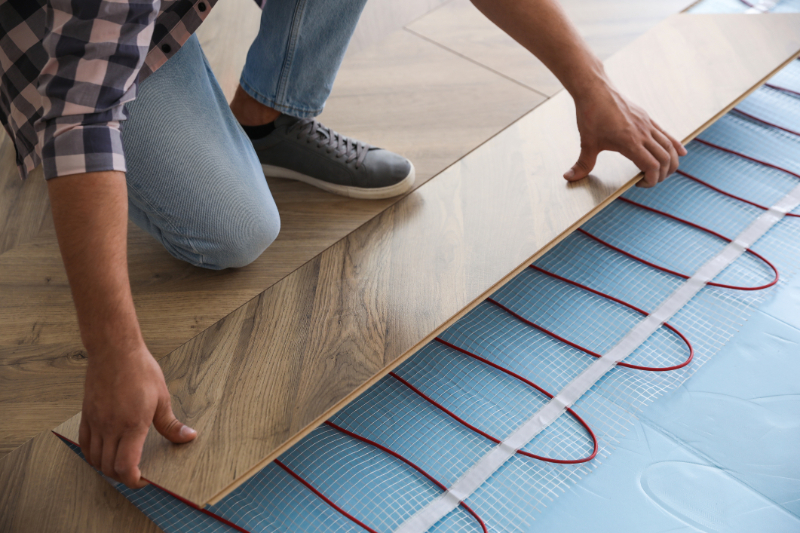
The answer is – why not? Radiant heated floors aren’t just for cold climates; they’re a key feature often overlooked in luxury home construction or design. These systems warm a room without bulky radiators or vents. Plus, they’re beneficial to your health.
BENEFITS OF HEATED FLOORS
-
Heated floors provide consistent warmth
Unlike forced-air systems that use vents, under-floor radiant heating evenly heats the entire floor. The result is a consistently warm room and ambient temperature, preventing cold drafts even at lower thermostat settings.
-
Heated floors are low-maintenance
It’s easy to maintain radiant floor heating systems. The best part is that they can last over 20 years if properly installed. Cable damage during installation can be quickly detected and repaired with a thermal imaging camera.
-
Heated floors work quietly
You can enjoy a quiet environment without disturbances because it works quietly, without furnace noise.
-
Heated floors don’t spread allergens
They have no air circulation, which means dust and allergens aren’t spread around the room. This is particularly beneficial for those with allergies or asthma.
-
Heated floors are energy efficient
Even heat distribution eliminates the need to overheat spaces to compensate for cold areas. It’s also energy efficient because there’s no need for ductwork that loses heat. To adjust the room temperature, you can use Wi-Fi or a programmable thermostat. Warm the room as needed and cool it down when not in use.
-
Heated floors are easy to install
They’re available in rolls with a heating cable attached to the serpentine mesh. It’s easy to install – just roll them out, cut, and turn as needed. To prevent heated tile floors from breaking, use loose cable secured with a membrane and square-shaped “studs.” Alternatively, hydronic systems are more complex and require professional installation.
THE DRAWBACKS
While installing heated floors has advantages, it’s also helpful to know some disadvantages.
-
Heated floors require flooring replacement
You have to replace your current flooring since the heating system is installed underneath. Tile is a common choice for radiant floors due to its excellent heat conductivity, but you can also opt for alternatives like floating hardwood, laminate, nailed hardwood, vinyl (including LVT), and more.
-
Heated floors elevate the floor level
Installing radiant heated floors on a subfloor raises your existing flooring by an inch. If the doors swing into the room, they may not clear the newly installed flooring. However, you can choose ultra-thin Environ heating mats or TempZone electric floor heating systems. Even when embedded in a thin set, these options result in a smaller increase in floor height.
-
Heated floors are costly
Radiant heated floors can be more expensive to install than other types of heating system. Electric floor heating systems range from $10 to $20 per square foot, depending on the model. You can use this floor heating quote builder to estimate your project costs. To calculate your ongoing maintenance expenses, use the operating cost calculator.
Given the advantages of heated floors in terms of comfort, health, and energy efficiency, incorporating them into your home can be a wise decision.
If you intend to sell your home, make heated floors a standout feature by emphasizing their luxurious appeal during home staging and on your listing.
If you need more decorating tips to help your home sell fast, let me, 949.295.5676 or send an email.
